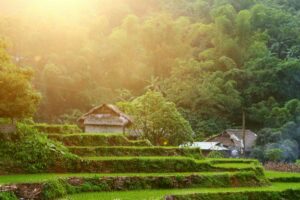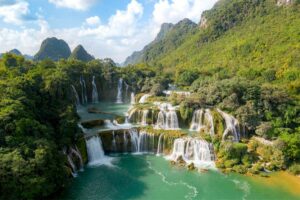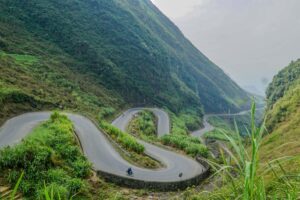Vietnam is a country blessed with diverse landscapes and breathtaking scenery. From towering mountains to serene valleys, there are numerous viewpoints in Vietnam that offer stunning vistas. Here are some of the most amazing viewpoints that you should not miss on your trip to Vietnam.
1. Bac Son Valley Viewpoint (Lang Son)

Perched atop a mountain overlooking the picturesque Bac Son Valley, this viewpoint offers a mesmerizing panorama of emerald rice paddies, winding rivers, and traditional stilt houses. The valley’s unique karst formations add a touch of drama to the landscape, creating a scene that is both serene and awe-inspiring. As the sun sets, the valley is bathed in a warm glow, casting long shadows across the fields and creating a truly magical atmosphere.
To reach the Bac Son Valley viewpoint, you can either hike up the mountain or take a motorbike taxi. The hike is moderately challenging, but the reward is well worth the effort. Once at the top, you’ll find a small pavilion where you can relax and soak in the breathtaking views. It’s best to visit in the early morning or late afternoon to avoid the midday heat and crowds.
2. Mua Cave Viewpoint (Ninh Binh)

Located atop Mua Cave, also known as the “Lying Dragon Mountain,” this viewpoint offers a panoramic vista of Tam Coc, a picturesque landscape of limestone karsts, rivers, and rice paddies. The climb to the viewpoint involves ascending nearly 500 steps, but the breathtaking scenery at the top makes it a worthwhile endeavor. From this vantage point, you’ll be able to appreciate the full scale of Tam Coc’s natural beauty, with the winding Ngo Dong River snaking through the valley and the iconic karst formations rising majestically in the distance.
Mua Cave is easily accessible from Ninh Binh city by taxi or motorbike. It’s best to visit in the early morning or late afternoon to avoid the crowds and capture the best light for photography. Be sure to wear comfortable shoes and bring plenty of water, as the climb can be strenuous.
3. Tram Ton Pass Viewpoint (Sapa)

The Tram Ton Pass, the highest mountain pass in Vietnam, offers a dramatic gateway to the stunning landscapes of Sapa. The viewpoint, often referred to as “Heaven’s Gate,” provides a breathtaking panorama of the Hoang Lien Son mountain range, with Fansipan peak towering in the distance. The winding road leading to the pass is an adventure in itself, with hairpin bends and steep drops revealing ever-changing vistas.
To reach the Tram Ton Pass viewpoint, you can either drive yourself, hire a taxi or motorbike, or join an organized tour. The pass is located about 18 kilometers from Sapa town and is easily accessible by road. The best time to visit is during the dry season (October to April) when the skies are clear and the views are at their best.
4. Ta Dung Lake Viewpoint
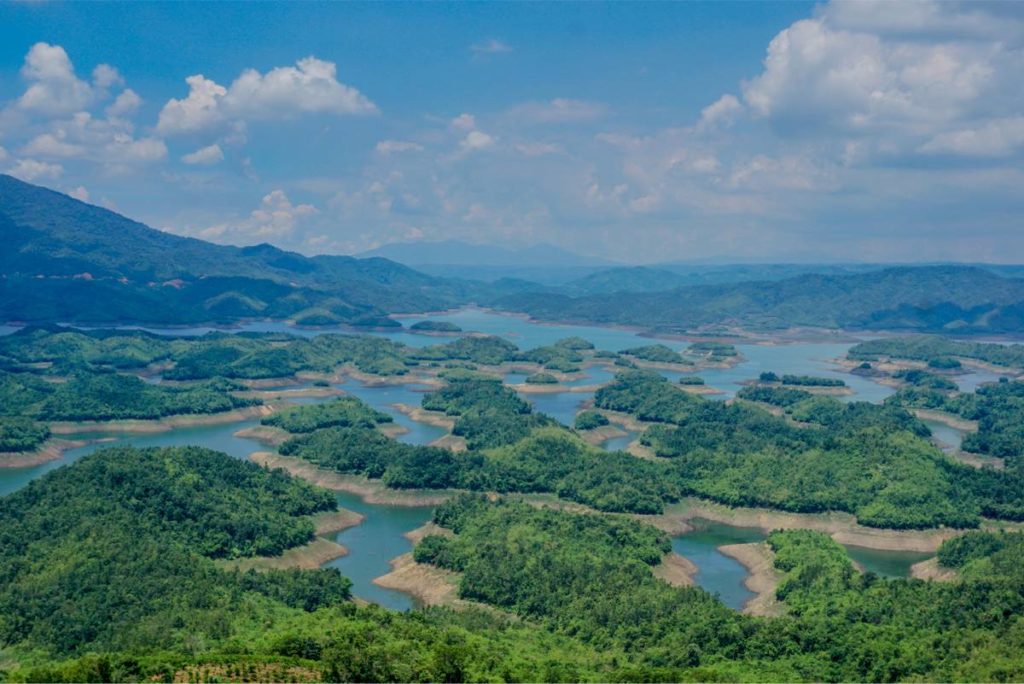
Ta Dung Lake, located in the Central Highlands province of Dak Nong, offers a breathtaking panorama of serene waters, lush green islands, and mist-shrouded mountains. This picturesque lake, formed by the damming of the Srepok River, is a hidden gem in Vietnam’s natural landscape. The viewpoint, perched on a hill overlooking the lake, provides a perfect vantage point to admire the vast expanse of water and the surrounding mountains. The tranquil atmosphere and stunning scenery make it an ideal spot for relaxation and contemplation.
Reaching the Ta Dung Lake viewpoint requires a bit of effort, as it is located in a remote area. The easiest way to get there is by hiring a private car or motorbike with a driver. The journey from the nearest town, Gia Nghia, takes about an hour and a half. Once you arrive, you’ll need to hike a short distance to reach the viewpoint. Be sure to wear comfortable shoes and bring plenty of water, as the trail can be steep in some sections.
5. Phong Nam Valley Viewpoint (Cao Bang)
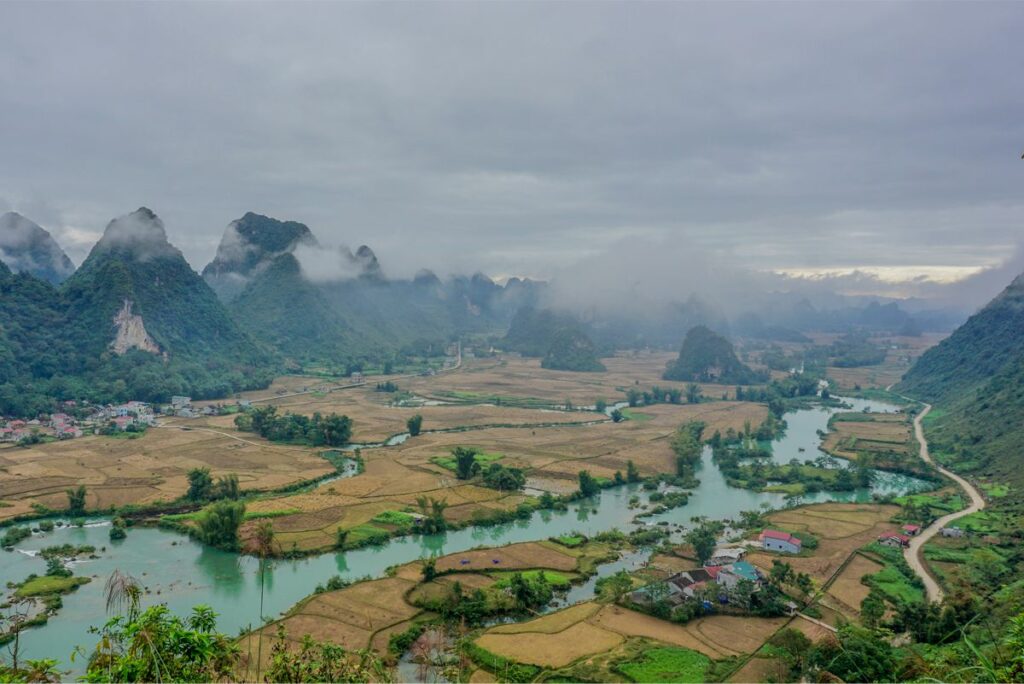
Phong Nam Valley, nestled amidst the limestone mountains of Cao Bang province, is a hidden paradise of natural beauty. The viewpoint, perched atop a hill overlooking the valley, offers a breathtaking panorama of emerald rice paddies, meandering rivers, and traditional stilt houses. The valley’s unique karst formations add a touch of drama to the landscape, creating a scene that is both serene and awe-inspiring.
To reach the Phong Nam Valley viewpoint, you can either hike or take a motorbike taxi from the nearby village of Nguom Ngao. The hike is moderately challenging, but the reward is a stunning vista that captures the essence of Cao Bang’s untouched beauty. It’s best to visit in the early morning or late afternoon.
6. Ma Pi Leng Pass Viewpoint (Ha Giang)
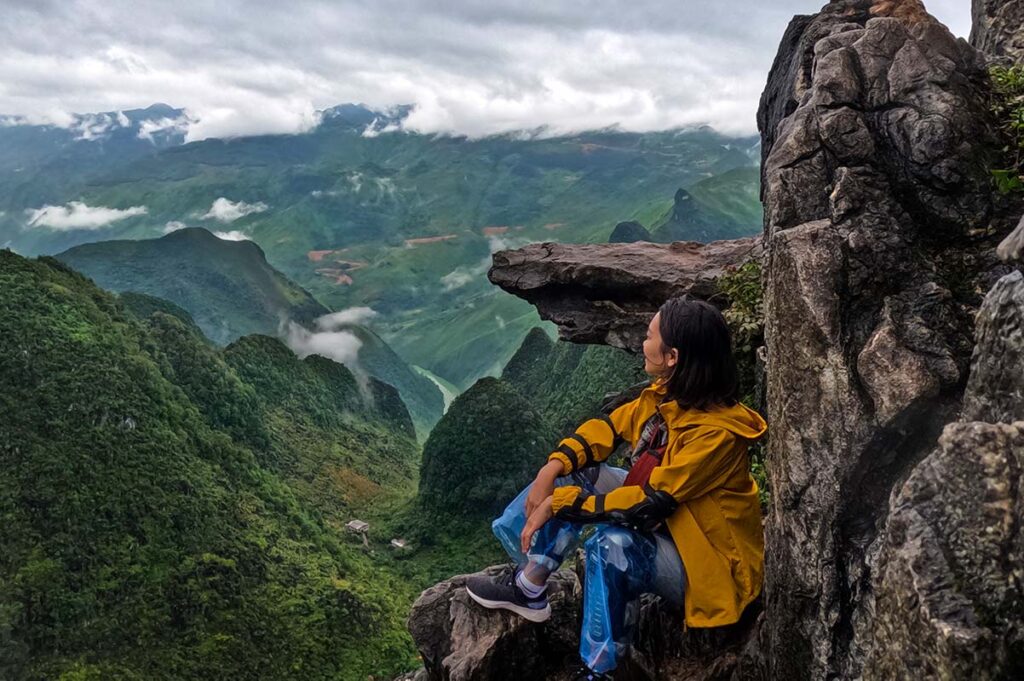
Ma Pi Leng Pass, often referred to as the “King of Passes” in Vietnam, is an iconic landmark in Ha Giang province and a must-visit for anyone seeking breathtaking mountain views. The viewpoint, situated at the highest point of the pass, offers a dramatic panorama of the Nho Que River snaking through the deep canyon below. The winding road leading to the pass is an adventure in itself, with hairpin bends and steep drops revealing ever-changing vistas of the surrounding mountains and valleys.
The Ma Pi Leng Pass is easily accessible by motorbike or car, and it’s the most popular stop on the Ha Giang Loop. To get to the viewpoint, you have to take the Ma Pi Leng Skywalk starting from The Hapiness Museum halfway down the pass. From there it is around 1 km walking to reach the viewpoint.
7. Ta Xua Peak Viewpoint (Son La)
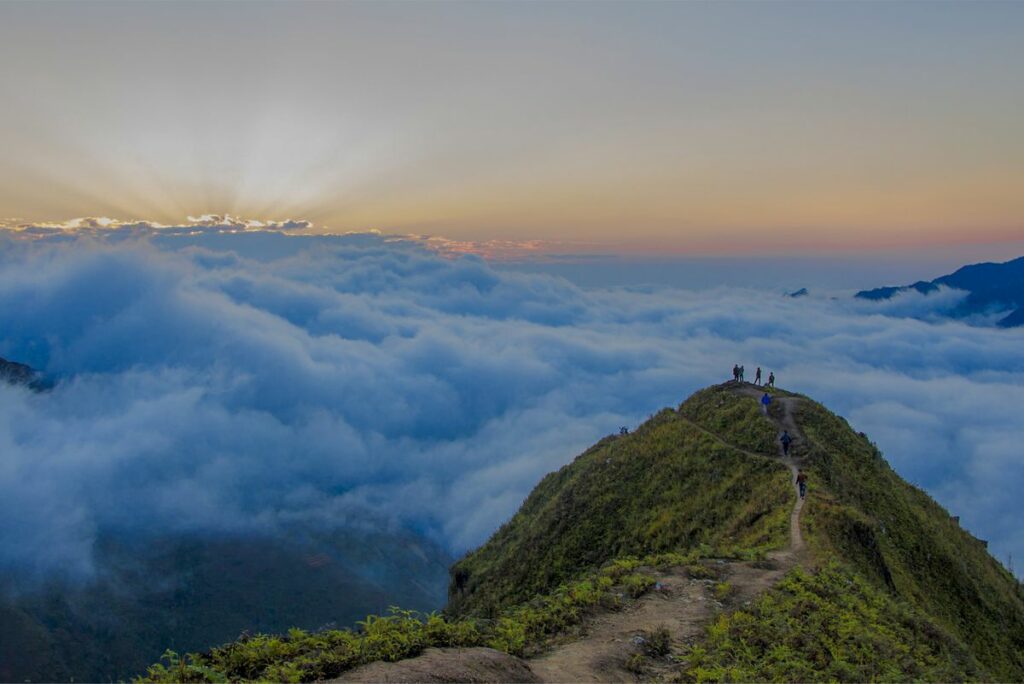
Ta Xua Peak, often referred to as the “Heaven’s Stairway,” is a hidden gem in Son La province, known for its breathtaking “sea of clouds” phenomenon. The viewpoint, located at the summit of the mountain, offers a mesmerizing panorama of mist-filled valleys, creating a surreal and ethereal atmosphere. On clear days, you can also enjoy stunning views of the surrounding mountains and villages. Ta Xua is a popular destination for photographers and adventurers seeking a unique and unforgettable experience.
Reaching the Ta Xua Peak viewpoint requires a challenging trek through dense forests and steep terrain. It’s recommended to hire a local guide who can navigate the trails and ensure your safety. The trek can take several hours, so be prepared with proper hiking gear and plenty of water. The best time to visit is during the dry season (October to April) when the chances of witnessing the “sea of clouds” are higher.
8. Mai Chau Viewpoint (Mai Chau)
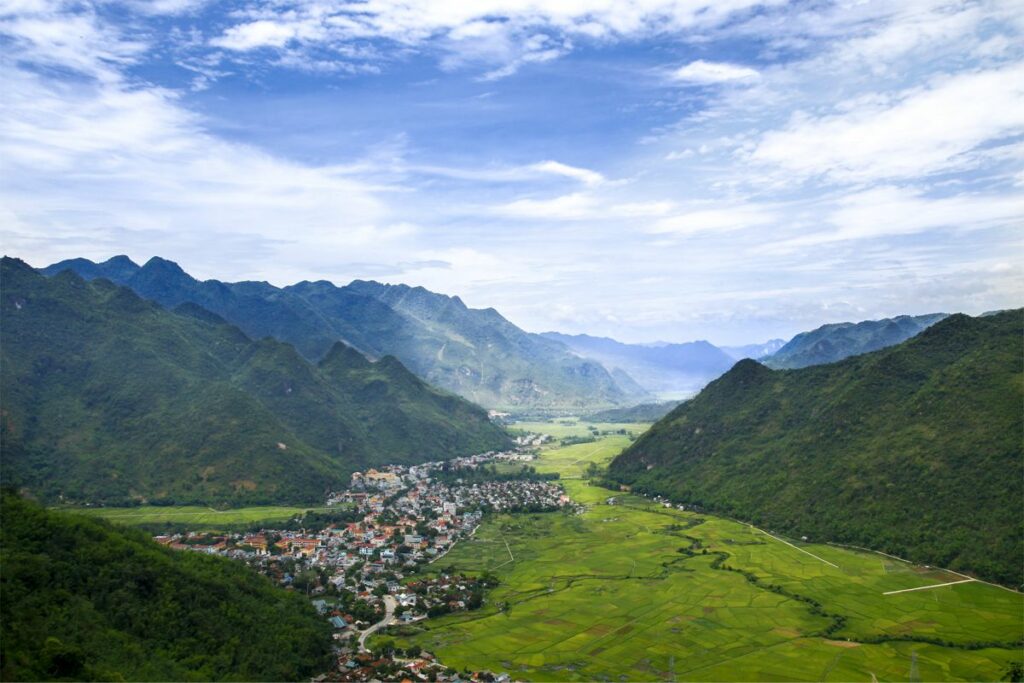
Mai Chau Valley, nestled in the mountains of northern Vietnam, is a picturesque landscape of rice paddies, traditional stilt houses, and lush green hills. The viewpoint is located on the Thung Khe Pass, offers a panoramic vistas. From this vantage point, you can admire the patchwork of rice fields, the winding rivers, and the charming villages nestled amongst the hills.
To get to the Mai Chau viewpoint, you can take a car or limousine bus from Hanoi, which is about a 3-hour drive. The viewpoint is right on the road between Hanoi and Mai Chau on the Thung Khe Pass, so you can not miss it.
9. Ti Top Island Viewpoint (Halong Bay)
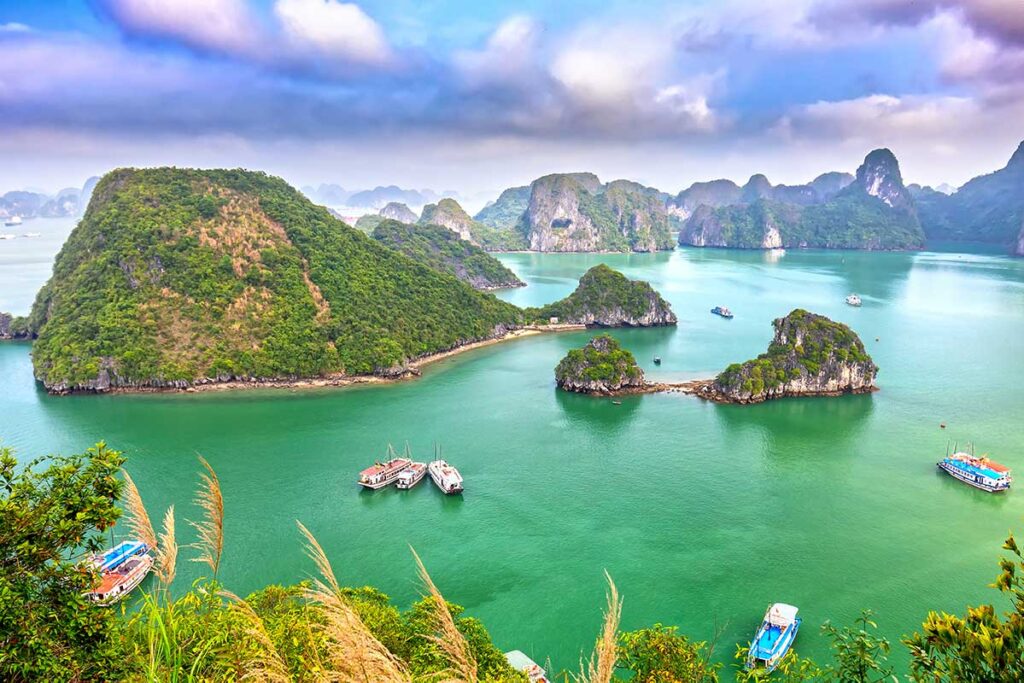
Ti Top Island, one of the many islands in Halong Bay, offers a breathtaking panorama of the bay’s iconic limestone karsts and emerald waters. The viewpoint, located at the summit of the island, requires a short but steep climb, but the reward is a 360-degree view of Halong Bay’s stunning scenery. From this vantage point, you can see countless karsts rising from the water, creating a mesmerizing seascape that is truly unforgettable.
Ti Top Island is typically visited as part of a Halong Bay cruise itinerary. Most cruises include a stop at the island, allowing you to hike to the viewpoint and soak in the panoramic views. Be sure to bring your camera to capture the beauty of this iconic landscape.
Read here more about viewpoints in Halong Bay.
10. Mam Xoi Viewpoint (Mu Cang Chai)
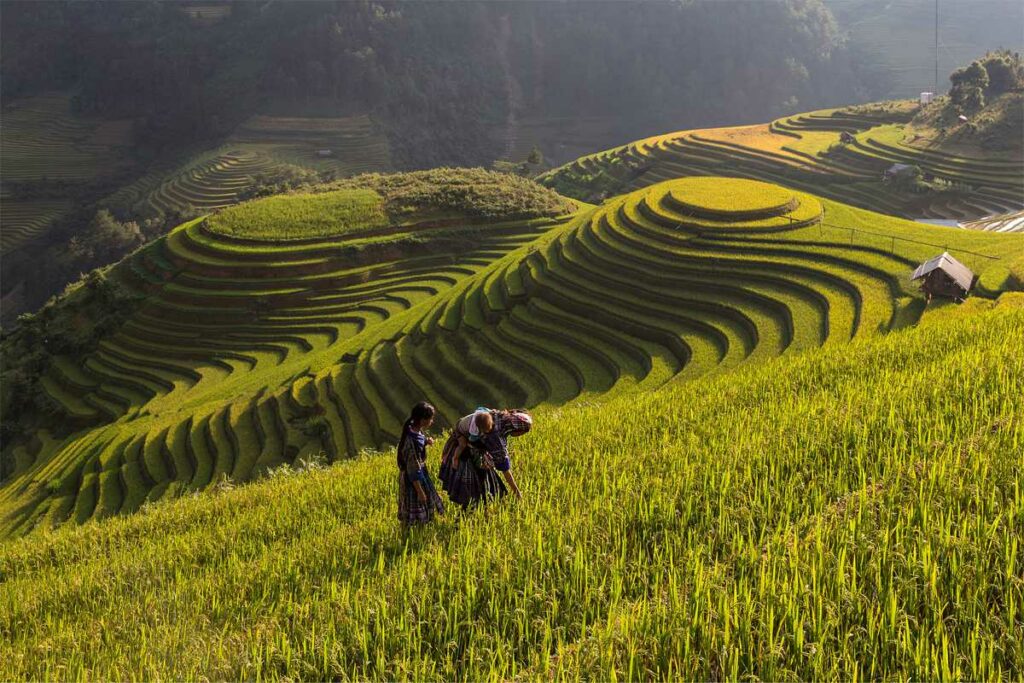
Viewpoint Mam Xoi, located in Mu Cang Chai, offers one of the most iconic and breathtaking views of Vietnam’s terraced rice fields. This viewpoint is famous for its unique “tray of sticky rice” shape, where the terraces cascade down the mountainside in stunning patterns. During the harvest season, the golden hues of the rice fields create a mesmerizing landscape that draws photographers and nature lovers from around the world.
To visit Viewpoint Mam Xoi, you can take a motorbike or car from Mu Cang Chai town. The best time to visit is during the rice harvest season, from September to early October, when the terraces are at their most vibrant. The journey to the viewpoint involves a short hike, making it an adventurous and rewarding experience for visitors.
11. Nam Du Island (Nam Du)

Nam Du Archipelago, a cluster of 21 islands off the coast of Kien Giang province, is a hidden paradise of pristine beaches, crystal-clear waters, and untouched natural beauty. The viewpoint on Hon Lon, the largest island in the archipelago, offers a breathtaking panorama of the surrounding islands, turquoise lagoons, and fishing villages. The view from this vantage point captures the essence of island life, with its tranquil atmosphere and unspoiled landscapes.
To reach Nam Du Island, you can take a ferry from Rach Gia in the Mekong Delta. The island is accessible by motorbike, and the viewpoint can be reached via a short hike or drive.
12. Fansipan Summit (Sapa)

Fansipan, the “Roof of Indochina,” offers the ultimate viewpoint in Vietnam. Standing tall at 3,143 meters, the summit provides a breathtaking 360-degree panorama of the surrounding mountains, valleys, and clouds. On a clear day, you can see for miles, taking in the vastness and beauty of the Hoang Lien Son mountain range. The sense of accomplishment that comes with reaching the summit, whether by trekking or cable car, is unparalleled.
There are two main ways to reach the Fansipan summit: trekking or taking the cable car. The trek is a challenging multi-day adventure, requiring a good level of fitness and preparation. The cable car, on the other hand, offers a quick and comfortable way to reach the top, making it accessible to a wider range of visitors. Whichever way you choose, the view from the Fansipan summit is an experience that will stay with you forever.
13. Monkey Mountain (Da Nang)

Monkey Mountain, also known as Son Tra Peninsula, offers a unique blend of natural beauty and cultural significance. The mountain is covered in lush rainforest, home to a variety of wildlife, including the endangered red-shanked douc langur. The viewpoint at the summit offers panoramic vistas of Da Nang city, the coastline, and the sparkling waters of the East Sea. The Linh Ung Pagoda, with its towering white statue of the Goddess of Mercy, adds a spiritual dimension to the experience.
To reach the Monkey Mountain viewpoint, you can either drive yourself, hire a taxi or motorbike, or join an organized tour. The winding road leading to the summit offers scenic views along the way. For a more adventurous experience, consider hiking the trails that lead to the top.
14. Lang Biang Mountain (Dalat)
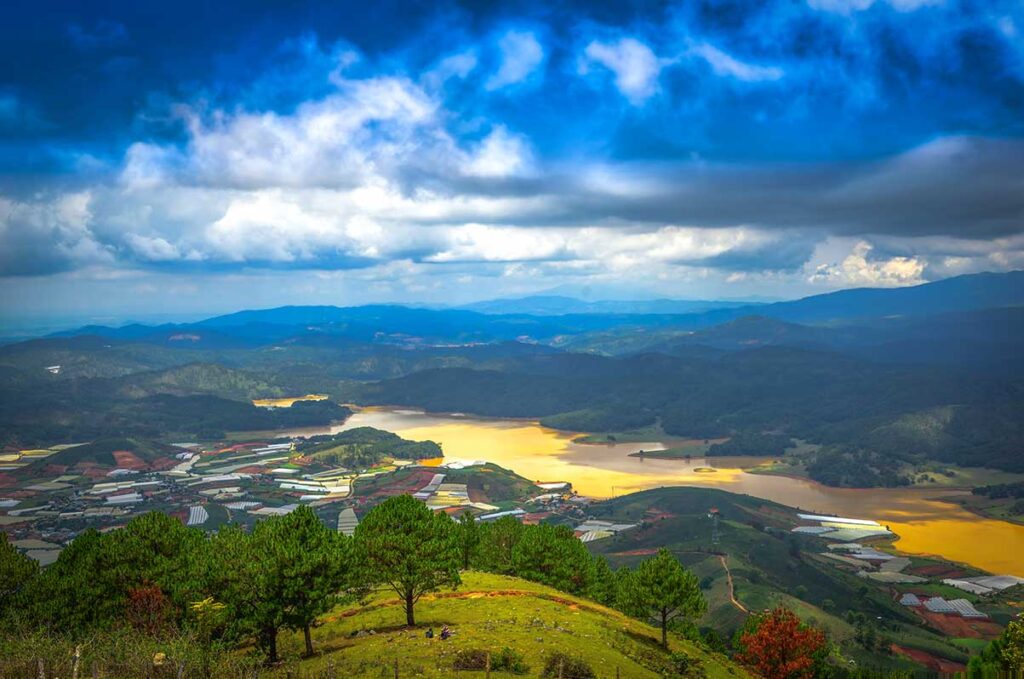
Lang Biang Mountain, the highest peak in Dalat, is a popular destination for nature lovers and adventure seekers. The summit offers breathtaking panoramic views of the city, surrounding valleys, and the Lang Biang plateau. Couples can enjoy a romantic picnic amidst the stunning scenery or take a leisurely stroll through the pine forests.
To reach Lang Biang Mountain, you can take a short drive from Dalat to the base of the mountain, followed by a jeep ride or hike to the top. The best time to visit is from November to March, during Dalat’s dry season, when the weather is cool and the skies are clear.
15. Me Pia Pass Viewpoint (Cao Bang)
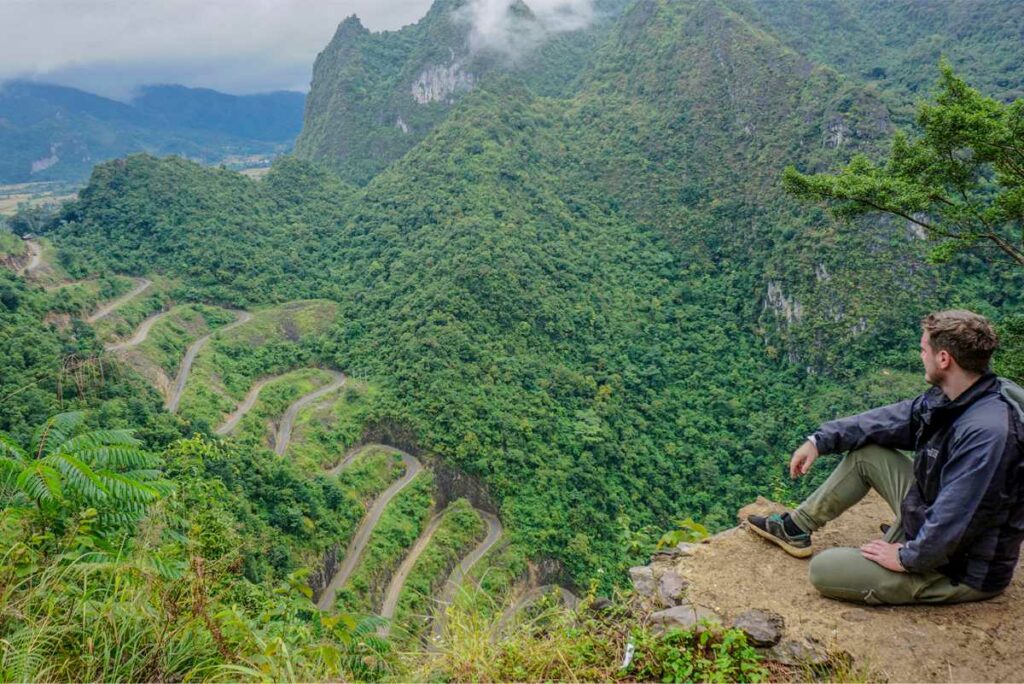
Me Pia Pass, often called the “14-Storey Pass” due to its winding road with 14 hairpin bends, offers a thrilling and scenic journey through the mountains of Cao Bang province. The viewpoint can be reached with a 30 minute walk from the summit of the pass, provides breathtaking view over the 14 turns of this mountain pass.
To reach the Me Pia Pass viewpoint, you can either drive yourself, hire a car or motorbike, or join an organized tour. The pass is located on Highway 4A, connecting Xuan Truong Municipality with the center of Bao Lac in Cao Bang Province. You can park on top of the mountain pass and hike to the viewpoint.
16. Hai Van Pass Viewpoint (Da Nang)

Hai Van Pass, a scenic mountain pass connecting Da Nang and Hue, is renowned for its stunning coastal views. The viewpoint, perched high above the pass, offers a panoramic vista of the East Sea, with its turquoise waters, sandy beaches, and picturesque fishing villages. The winding road leading to the pass is an adventure in itself, with hairpin bends and steep drops revealing ever-changing vistas.
The Hai Van Pass viewpoint is easily accessible by motorbike or car, and it’s a popular stop on the journey between Da Nang and Hue. The best time to visit is during the dry season (February to August) when the skies are clear and the views are at their best.
